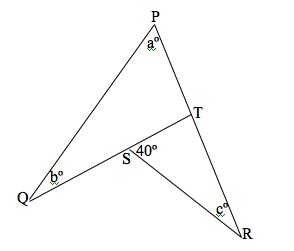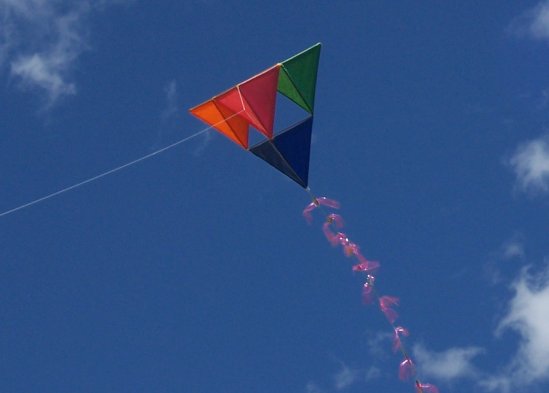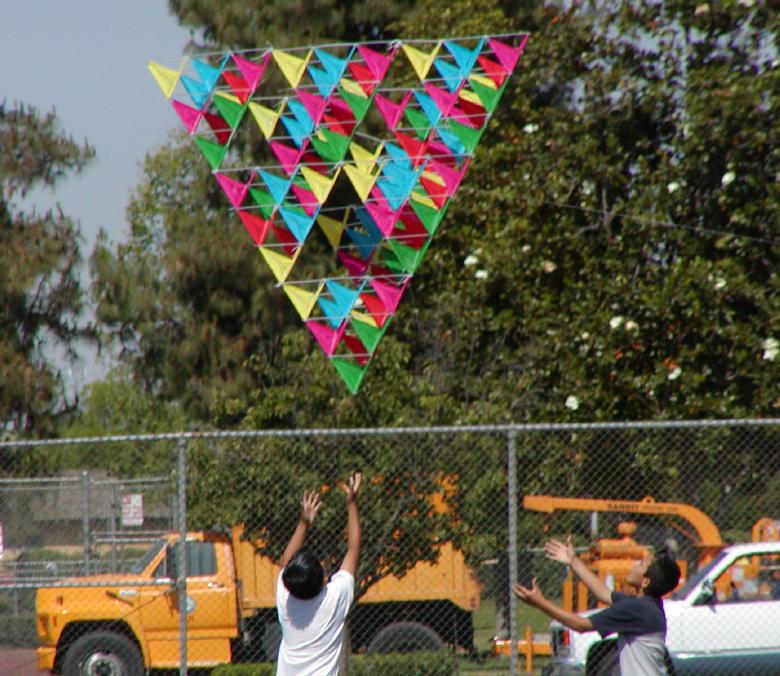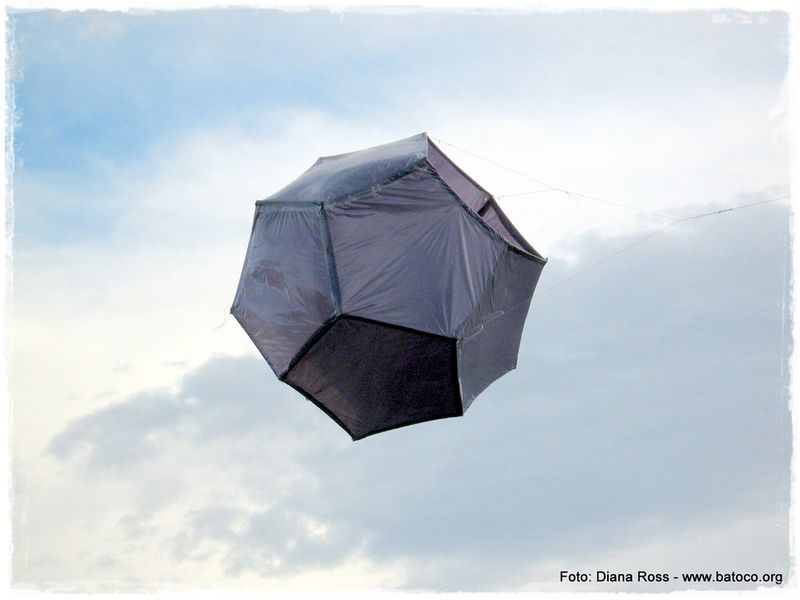Math Monday: Geometry Takes Flight
by Glen Whitney

this one), any time you make a classic diamond kite

you are exploring the properties of the mathematical kite shape. (Ironically, the word “diamond” is generally taken to mean “rhombus” mathematically, so while all diamonds are (math) kites, almost no (flying) kites are in fact diamonds..) Bonus points for making a Penrose kite-shaped kite.
Turning to more complicated kite designs, here are a few more you might want to try. Jeff Duntemann gives very complete directions for building a lovely tetrahedral kite.

Now this is a project that can be taken to extremes, as Diane Hislop and her classes of fourth-grade students have found out over the years

Finally, other polyhedral shapes are possible as well, as this photo of a design by Diana Ross and Roberto Trinchero shows

Anyone up for building an icosahedral kite? Send photos of your FMOs (Flying Mathematical Objects) to mondays@momath.org — and may the wind be always in your sails.
This article first appeared on Make: Online, March 18, 2013.